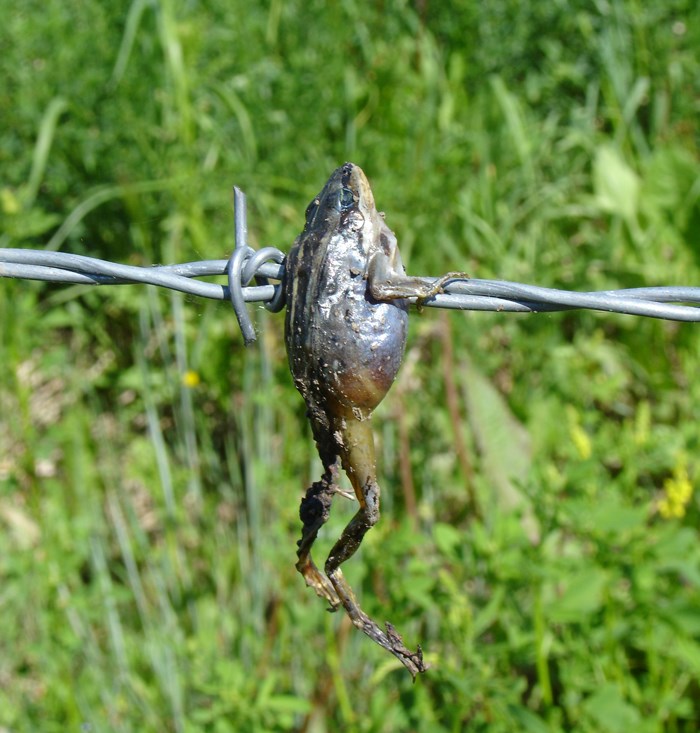Be on the lookout for Loggerhead Shrikes (a.k.a. Butcherbirds) perching on fence posts, utility wires, and prominent dead branches in shelterbelts and shrub patches, particularly near farmsteads. The Loggerhead Shrike, a threatened species, is a migratory songbird that returns to the Saskatchewan prairies to breed in the spring after wintering in southern Texas and Mexico.
In order to feed their hungry families, shrikes prey on insects and rodents such as grasshoppers, mice, and voles. All of which are considered agricultural pests by landowners, making the shrike a great form of natural pest control. “The Loggerhead Shrike earned its reputation as a Butcherbird from its habit of hanging its prey on the barbs of fences and thorny shrubs, as butchers would hang their meat” explains Rebecca Magnus, Habitat Stewardship Coordinator. “Impaling their prey compensates for shrikes’ lack of talons (claws), which would allow them to hold their prey while eating, as is done by birds of prey such as hawks”.
The Loggerhead Shrike is most readily recognized by its black eye “mask” and distinctive high-pitched shriek given as an alarm call. It is slightly smaller than a robin and sports a black hooked beak, gray back, white under parts, and black wings. White patches on the wings and tail make the Loggerhead Shrike easy to identify when flying. Loggerhead Shrikes can be found nesting in thorny shrubs such as hawthorn or buffaloberry, shelterbelts, occupied or abandoned farmsteads, golf courses, and cemeteries.
Nature Saskatchewan is asking anyone who sees a Loggerhead Shrike, or insects, rodents, frogs, or snakes impaled on thorny shrubs or barbed wire fence, to please call our toll-free number at 1-800-667-4668.
By reporting a sighting to Nature Saskatchewan’s Shrubs for Shrikes program you are helping to monitor the shrike population, and providing valuable information for the conservation of this unique songbird.
Any information provided is not shared without permission.



